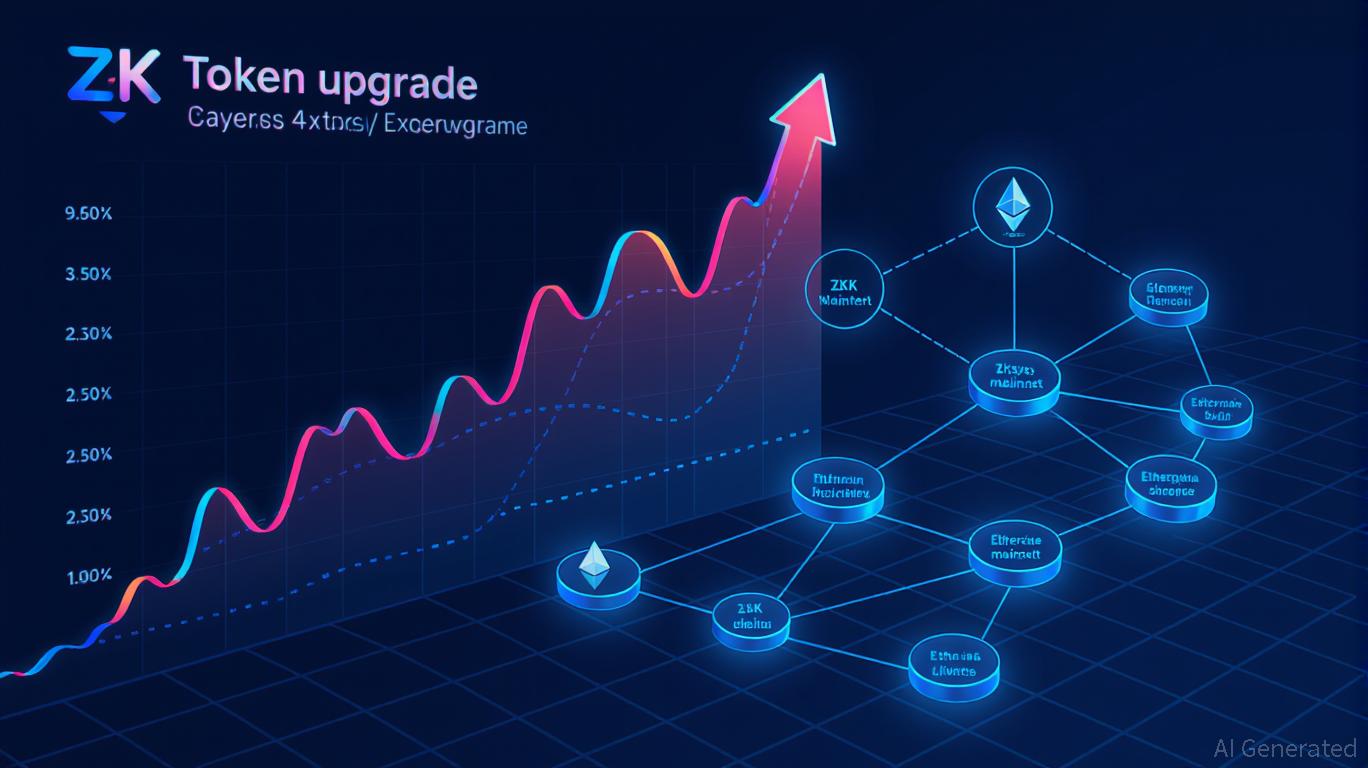TWT's Updated Tokenomics Framework: Driving Sustainable Value and Expanding the DeFi Ecosystem
- Trust Wallet's 2025 TWT tokenomics shift prioritizes utility over governance, using Trust Premium's XP system to drive user engagement and retention. - Strategic integrations like FlexGas (transaction fee payments) and Ondo Finance's RWAs expand TWT's cross-chain utility, bridging DeFi and traditional finance. - TWT's loyalty-driven model reduces circulating supply through locking mechanisms, contrasting inflationary approaches while attracting institutional investors. - Binance's reduced collateral rati
A Utility-Driven Flywheel: TWT as the Engine of Engagement
Trust Premium creates a gamified environment where participants collect Trust XPs by performing on-chain actions such as swapping, staking, and holding digital assets. These experience points unlock progressive rewards (Bronze → Silver → Gold), including reduced gas fees, lower swap charges, and priority access to new features. Central to this system is TWT: owning or locking TWT speeds up XP accumulation and enhances user benefits, as highlighted by
This setup establishes a self-sustaining flywheel. Increased interaction with Trust Wallet’s platform boosts the practical value of TWT holdings, which helps decrease selling pressure and encourages users to stay long-term. Trust Wallet CEO Eowyn Chen describes TWT as "the fuel for a sustainable growth flywheel," directly linked to the platform’s expansion, according to

Strategic Partnerships and Cross-Chain Utility
TWT’s appeal is further enhanced by strategic alliances that broaden its role beyond governance. The introduction of FlexGas in August 2025 enables users to pay transaction fees with TWT, USDT, or
Moreover, Trust Wallet’s partnership with Ondo Finance has introduced real-world assets (RWAs) such as U.S. Treasury bonds to the blockchain, using TWT as a connector between decentralized and traditional finance, as mentioned by
Token Supply Dynamics: A Balancing Act
Although Trust Wallet’s 2025 updates do not provide specific details about TWT’s supply or inflation, the structure suggests an emphasis on supply-side stability. Locking TWT for premium access reduces the available supply, potentially making the token more scarce. This approach differs from tokens like
The lack of clear inflation data for TWT may be intentional, possibly to encourage user participation. Still, the loyalty-based system naturally limits speculative selling by connecting token worth to active involvement in the ecosystem. This strategy reflects a wider industry movement toward prioritizing utility over inflation, as reported by
Challenges and Risks
Despite its advantages, TWT’s framework is not without obstacles. Binance’s decision to lower TWT’s collateral ratio from 60% to 45% could reduce leveraged trading and institutional involvement, as
Conclusion: A Blueprint for Sustainable DeFi Growth
TWT’s revised tokenomics present a bold new vision for how DeFi tokens can foster ecosystem expansion. By focusing on practical use, user participation, and strategic alliances, Trust Wallet is shaping TWT into a versatile asset that connects decentralized and traditional finance. While there are still challenges ahead, the emphasis on building lasting value rather than chasing short-term gains provides a promising model for sustainable growth in the DeFi sector.
Disclaimer: The content of this article solely reflects the author's opinion and does not represent the platform in any capacity. This article is not intended to serve as a reference for making investment decisions.
You may also like
Vitalik Buterin Backs ZKsync: Accelerating Institutional Embrace Within Ethereum's Layer-2 Network
- Vitalik Buterin endorsed ZKsync's Atlas upgrade, highlighting its 15,000 TPS capacity and ZK-secured scalability for Ethereum's institutional adoption. - The upgrade's ZK Stack enables seamless Layer 1-2 liquidity sharing, attracting enterprises with privacy-focused, Ethereum-compatible solutions. - ZK token's deflationary model and 50% price surge post-endorsement demonstrate growing institutional confidence in ZKsync's enterprise-grade infrastructure. - Upcoming Fusaka upgrade (30,000 TPS target) and e

ZK Atlas Enhancement: Accelerating Institutional Embrace in the Age of Blockchain
- ZK Atlas Upgrade addresses institutional blockchain scalability needs with 15,000 TPS and 1-second finality, aligning with trading/settlement demands. - ZKsync's deflationary tokenomics model ties token value to network usage, boosting institutional confidence through yield generation and scarcity. - Vitalik Buterin's endorsement and Ethereum compatibility lower adoption barriers, enabling seamless integration with existing institutional workflows. - Post-upgrade $300M+ daily trading volume and 20% token

Pi Coin’s Pursuit of AI Faces Challenges from Market Instability and Scalability Issues
- Pi Coin (PI) fell below $0.30 amid market volatility, despite a 21% surge driven by whale activity and 535% higher trading volume. - Node 0.5.4 upgrades improved reward accuracy and network reliability, addressing bugs in block creation and automatic updates. - Collaboration with OpenMind demonstrated Pi Nodes' AI processing potential, positioning the network as a decentralized computing alternative. - Sustaining gains above $0.27 is critical to test $0.36 resistance, while competition from Bitcoin and S
Ethereum News Update: Ethereum’s $201B Utility Boom Contrasts with ETH’s Stagnant Price—Is Broader Market Direction Needed?
- Ethereum's tokenized assets hit $201B, capturing 64% of global market share, driven by institutional adoption and stablecoin dominance. - Stablecoins like USDT/USDC and PayPal's PYUSD ($18.6B in 2025) fuel DeFi, cross-border payments, and exchange liquidity. - Tokenized RWAs ($12B) and BlackRock/Fidelity's on-chain funds surge 2,000% since 2024, outpacing traditional finance infrastructure. - ETH price remains below $3,500 despite strong fundamentals, with technical indicators showing weak buying pressur
